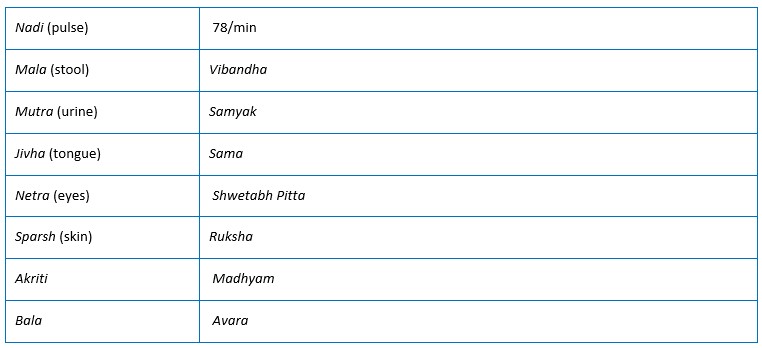Role of Ayurvedic management in Pakshaghata (Hemiplegia): A Case Report
DOI:
https://doi.org/10.21760/jaims.9.3.32Keywords:
Pakshaghata, Vata Vyadhi, HemiplegiaAbstract
Hemiplegia is a condition with gradual weakness or loss of functions on either half of the body. The injury to the motor centers of the brain either due to ischemia or hemorrhage, can cause poor balance, speech deficits and loss of function. The prevalence rate of hemiplegia is 9 cases per 1000 in global population.[1] In Ayurveda, this condition can be compared to Pakshaghata due to similarity in clinical signs and symptoms being. According to Acharya Charaka Pakshaghata is a Vatavyadhi, where vitiated Vata Dosha is involved in its pathogenesis. Since Pakshaghata is Nanatatmaja Vaat Vyadhi hence use of oral ayurvedic drugs along with Panchakarma therapeutics is recommended.
Downloads
References
Global Health Estimates. Geneva: World Health Organization:2012 Available from: http:/www.who.int/healthinfo/globalburdendisease/en.
Munjal YP API text book of medicine. Vol-2, 9th edition, New Delhi. Jaypee brothers Medical publisher (p) Ltd.2012; P1401
World health rankings - the top 20 causes of death in India. http/www.worldlifeexpectency.com/india-stroke.published by WHO may 2014.
Munjal YP API text book of medicine. Vol-2, 9th edition, New Delhi. Jaypee brothers Medical publisher (p) Ltd 2012; P 1403.
Charak Samhita, Editior acharya vidyadhar Shukla,prof.ravi dutta Tripathi,Chaukhambha Publication Vol-2 ch.28 Sloka 53-55,59 p.697.
Susruta Samhita, Editior Kaviraja ambikadutta shastri,vol-1 nidan sthan chapter-1 sloka no.60-63 p no-302.
Yogratnakar Vidyotini hindi commentary by Vaidya Shri Lakshmi Pati Sastri, Chaukhambha Prakashan, Varanasi, 2015Edition,Chapter,page No-5.
Charak Samhita, Editior acharya vidyadhar Shukla,prof.ravi dutta Tripathi,Chaukhambha Publication Vol-1 sutra sathan-13,14.
Charak Samhita, Editior acharya vidyadhar Shukla,prof.ravi dutta Tripathi,Chaukhambha Publication Vol-2 Sidhi sthan chap-9 p -958.
Charak Samhita, Editior acharya vidyadhar Shukla,prof.ravi dutta Tripathi,Chaukhambha Publication Vol-2 sidhi sthan chap-4 sloka no 53-54 p-915.
Susruta Samhita, Editior Kaviraja ambikadutta shastri, vol-1 Chiktsha sthan chapter-5 sloka no.19 p-42.
Ramniwas sharma, hindi translation of Sahastrayogyam, Tailaprakarama, New Delhi, Chaukhambha Sanskrit Pratishthan,2016,Pg.No.75.
Vagbhattacharya, Rasaratnasamucchaya, edited by Dattatreya Anant Kulkarni, Meharchand Lachhamandas Publication, New Delhi: Reprint 2010, 21st Chapter Verse 131140,441pp. Shri.Govinda Das,Bhaishajya Ratnavali, edited .
Rastantrasaar and siddhaprayog sangharha part-1 Prakshak -krishana gopal ayurved bhavan Taila Prakarn p no-422 and Guggulu Prakaran p no-322.
Ray c, et.al. Evaluation of neuro-protective activity of aswagandha and vacha incombination as ayurvedic Medhya rasayana in vivo. Int ayurvedic Med J.2016;4(10);2914-22.
Ayurvediya panchakarma Chiktsha by Prof.Radheshyam sharma, Dr Gopesh ,Dr gunjan, p no-247.
Ayurvedasaar sangrha,Shri vaidhyanath ayurveda bhavan Edition 2022 p 443-444.















